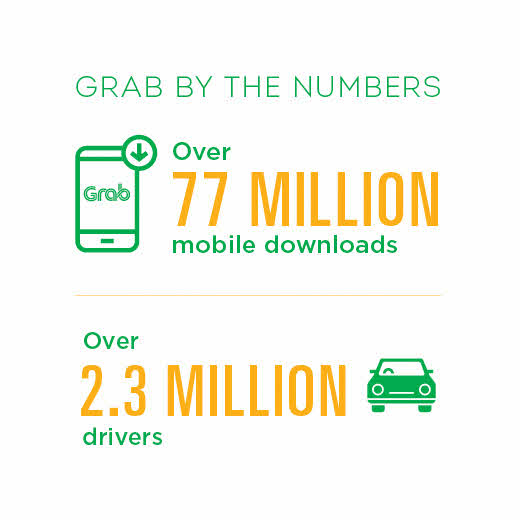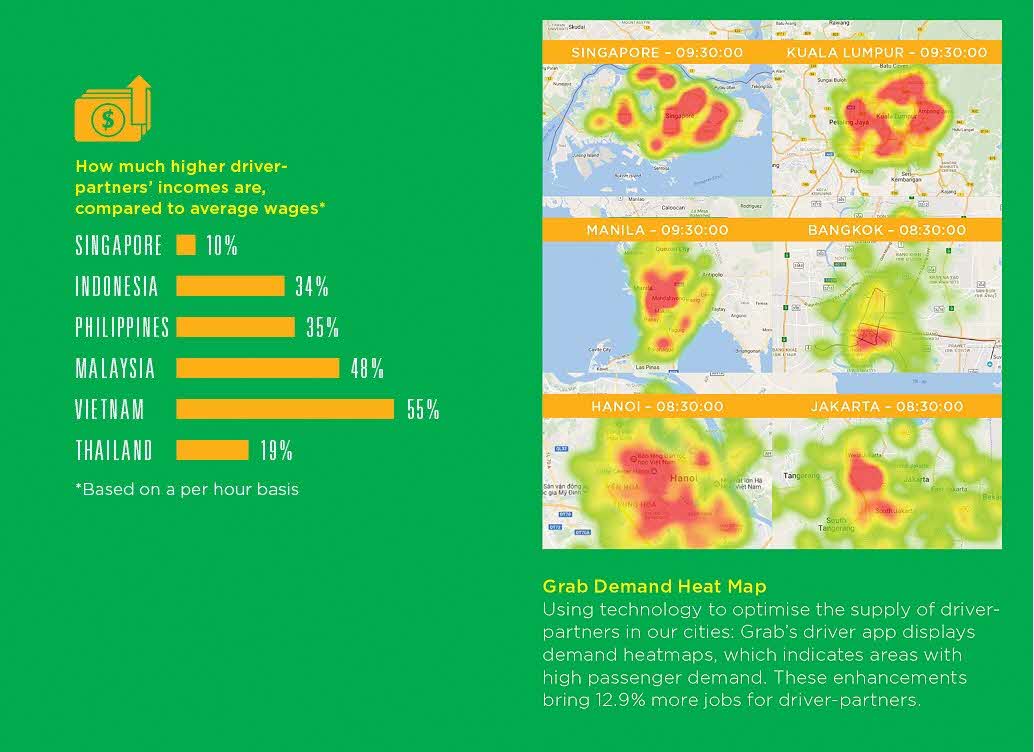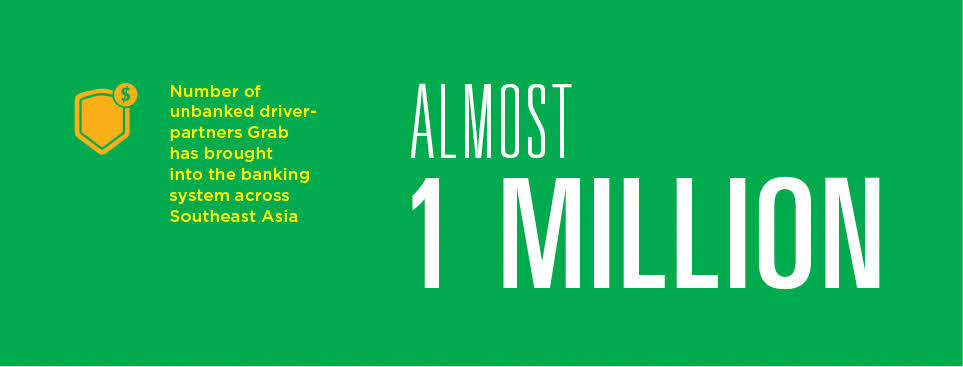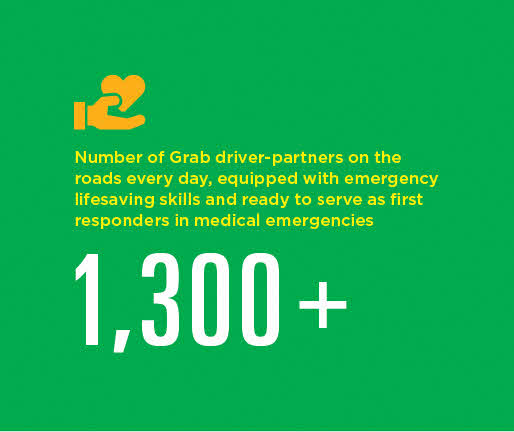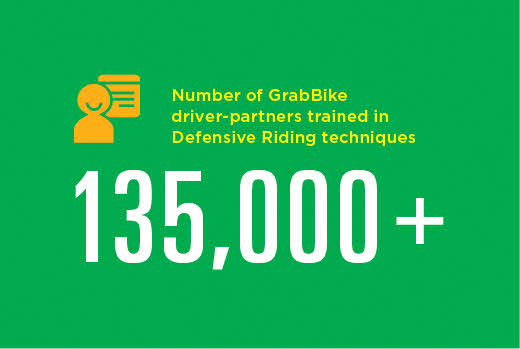Public Value through Private Partnerships: The Grab Story
ETHOS Issue 18 Jan 2018

Public Value through Private Partnerships: The Grab Story from Civil Service College Singapore on Vimeo.
Founded in 2012, Grab is Southeast Asia’s leading on-demand transportation and mobile payments platform.* Headquartered in Singapore, Grab has expanded into more than 168 cities in eight countries across Southeast Asia.
*According to TNS, a global market research firm, Grab’s services (taxis, cars and motorbikes) are used most often in Singapore, Indonesia, Malaysia, Philippines, Thailand and Vietnam, compared to other ride-sharing and hailing apps.
Solving Real Problems through Its Social Mission
Grab’s vision is to drive Southeast Asia transportation forward and transform the region’s mobile internet ecosystem. Our social mission in transport is to provide safe, reliable and accessible transportation options to connect people to places where they work, live and play. Grab uses technology to improve the efficiency and cost-effectiveness of these options, offering viable alternatives that can encourage people to give up their cars, contributing to Singapore’s car-lite vision.
With its advanced digital infrastructure and ambition of becoming a Smart Nation, Singapore has provided a good testbed for experimenting with new multi-modal transportation solutions and payments platforms.
All Grab products and features are planned and managed out of the Singapore R&D centre, which is the largest of our six R&D centres (the other five centres are located in Beijing, Bangalore, Jakarta, Ho Chi Minh City and Seattle).
Providing Transport Options for All Budgets
Since entering the Singapore market, Grab has worked with the government to apply technology to provide affordable, safe and convenient commuting options. Such options maximise the use of each vehicle to get people from point to point, and complement Singapore’s public transportation system by serving the first and last mile journeys of commuters. For example, Grab launched the GrabShuttle service in March 2017 (in partnership with GovTech in Singapore) to serve relatively inaccessible areas, such as Tuas, Changi industrial estates, and Sengkang–Punggol, with more direct routes, and at a lower price point.
Plugging the Cashless Payments Gap
Grab is now focusing on solving the next big, meaningful tech problem in Southeast Asia: to make cashless transactions possible for everyone. Grab already has a substantive base of transport users who use our app to book—and pay for—their daily commutes. Southeast Asia is still a largely cash-based transaction economy. A large proportion of the region’s 620 million people remain unbanked, with the World Bank noting that only 27% have a bank account, while only 9% of adults have a credit card.
A study commissioned last year by the Monetary Authority of Singapore (MAS) and conducted by business consultancy KPMG showed that in Singapore, cash formed more than 80% of payments at small shops and neighbourhood stores, and about 90% at hawker centres and wet markets.
Grab first launched GrabPay Credits in November 2016, allowing everyone in Singapore with the Grab mobile app to make payments for rides taken through a cashless stored value option. Today, GrabPay has expanded beyond the realm of transportation. Users—beginning with those in Singapore—can transfer money to one another, and use GrabPay as an e-wallet to pay for food and services in hawker stalls, restaurants and shops. We are focused on helping cash-based businesses in Singapore go cashless, giving them access to new customers in an easy and affordable way.
With Singapore as a testbed, we look to work with public and private sector organisations to scale the GrabPay e-wallet across Southeast Asia in 2018.
Creating Public Value through Partnerships
As our portfolio of operating locations and services grows, Grab continues to prioritise community welfare—going beyond drivers and passengers to helping governments and local communities at large. Grab’s approach is collaborative: for example, helping governments think about how ride-hailing regulations should come into effect, based on what the local infrastructure needs are. In turn, governments appreciate that we are aligned to their policy agendas and that we work together to provide long-term solutions.
One example of this is our contribution to the World Bank’s OpenTraffic initiative in Manila, Cebu and Kuala Lumpur.
Supporting Local Communities
Besides providing a safe, convenient and accessible transportation platform for Grab users and ensuring Grab driver-partners continue to earn sustainable incomes, we constantly look for opportunities to contribute back to local communities in the markets where we operate.
When a study in Manila indicated that Grab driver-partners remitted their earnings to their partners, and that nine out of every 10 housewives were ill-equipped to manage the money remitted by their Grab driver-husbands, Grab Philippines launched Grab Academy for them. The goal: empowering and educating the wives to manage their husbands’ income well, and at the same time enabling them to start their own businesses.
Over 1,000 housewives of our driver-partners attended the one-day Grab Wives Academy programme, organised in partnership with Unionbank, Lendr, Avon, Sunlife, Angat Pilipinas, and Generika Drugstore. Thereafter, hundreds of housewives are now direct sellers for Avon and are actively contributing to their household income.
Across the region, Grab drivers earn 35% more than the average wages—most of which is spent on supporting their families and sending their children to school. Grab’s driver-partners in Singapore are entitled to exclusive fuel discounts to keep costs low, a free Personal Accident Insurance plan for greater peace of mind, and Medisave contributions to save up for future medical needs.
To supplement the education of their driver-partners’ children, Grab launched GrabSchool—an enrichment workshop to develop entrepreneurship and innovation skills. Over 1,000 children have benefited from this. Going a step further—in Vietnam—Grab also granted 35 scholarships, and donated gifts and cash for underprivileged people amounting to VND 140 million in 2017.
To improve road safety1 with better vision,2 Grab partnered with Essilor in 2017 to provide driver-partners in the region with free eye-screening and access to quality low-cost eyewear. For example, a vision booth was set up in Grab’s Driver Centres in Yangon and Jakarta, where hundreds of drivers have had their eyes screened and are now equipped with quality spectacles for improved vision.
Grab also uses technology to correct driving behaviour of their driver-partners. In Singapore for example, the use of telematics has improved driving behaviour by nearly 35%. In-car cameras are also installed and distributed at a subsidy to Grab-driver partners in Malaysia, and drivers are trained on emergency skills including first aid, CPR and AED.
OpenTraffic provides traffic management agencies and city planners with access to open datasets so they can better manage traffic flow, make investment decisions on local transport infrastructure, and take a more data-driven approach to urban planning.
SHARING TRAFFIC DATA TO AID PLANNING
OpenTraffic provides traffic management agencies and city planners with access to open datasets so they can better manage traffic flow, make investment decisions on local transport infrastructure, and take a more data-driven approach to urban planning.
Under the OpenTraffic initiative, Grab provides aggregated, anonymised traffic data from its drivers’ real-time GPS data streams. Provided at no cost to governments via an open data license, local government agencies can use this data to enhance existing traffic management systems, such as optimising traffic light control and coordination, in order to address traffic congestion and improve road safety.
OpenTraffic has enabled the Philippines to make a number of enhancements, such as improvements in traffic signal times along the primary west-east arterial in Cebu City, without additional infrastructure investment. Easing city congestion during peak hour traffic helps reduce carbon emissions, saves commuters time from less traffic congestion, and moves Southeast Asia towards better and smarter cities.
DIGITISATION: TRANSFORMING LIVELIHOODS
1. IMPROVING DRIVER-PARTNERS’ EARNING POTENTIAL
Grab drivers are “partners”: not workers nor contractors. Grab wants them to have a way to earn enough to have options in life.
There are now more than 2.3 million driver-partners on the Grab platform. They earn on average one-third (35%) more on a per hour basis compared to average worker wages across all of Grab’s markets.
2. AIDING FINANCIAL AND DIGITAL INCLUSION
With 70% of Southeast Asians still lacking basic internet access, the Grab app (along with Grab microfinanced phones) has made it possible for many driver-partners to experience the power of the internet for the first time—bridging the digital divide. Grab has assisted in opening bank accounts for more than two-thirds of its driver-partners, introducing them to banking and other financial services for the first time in their lives. Nearly 2.3 million driver-partners now rely on the Grab platform for their household income.
To improve their welfare and encourage driver-partners to save for long-term needs, Grab in Singapore matches qualifying driver-partner’s Medisave contributions by up to $200.
Over and above the paid medical health checks Grab covers, as part of the PDVL1 application process, Grab also provides driver-partners with personal insurance at no cost: a benefit enjoyed by GrabCar driver-partners and GrabHitch passengers in 168 cities across eight countries.
3. UPSKILLING
Grab’s driver partners are leading the change in the new gig economy. Like any entrepreneur, whilst they enjoy flexible working hours, they need to refine their skills: to be able to speak English fluently, drive safely, learn how to read maps and use smartphones.
In the past, Grab supported driver-partners by microfinancing smartphones; today it offers similar options for cars. In some markets, including Singapore, they can sign up for English-speaking classes, or learn how to manage elderly passengers.
Such skills support drivers by helping them to enhance their customer service and improve customer ratings, boosting their earnings.
4. PROVIDING SAFER COMMUTES
On average, Grab commuters reach their destinations in less than half the time (52% reduction in travel time on average) compared to public transport options in their cities.
To design safety into its technology, Grab invested in telematics, to measure how safe Grab drivers are on the road. Personalised weekly ‘report cards’ are sent to all driver-partners in Singapore to highlight driving safety issues, e.g., their rate of braking or speeding. In trials, Grab found that this helped drivers reduce their reported driving safety issues by as much as 35%.
In addition to this, Grab trains drivers in emergency skills such as first aid, CPR and AED, through partnerships with the International Federation of Red Cross and Red Crescent Societies. It equips drivers with defensive riding skills and road safety techniques. This has kept traffic accident rates from Grab five times lower than national averages.
5. AIDING CLEANER AND MORE EFFICIENT CITIES
Grab’s two flagship carpooling services—GrabShare and GrabHitch—are helping to address pollution and congestion in Southeast Asia.
Grab saves an estimated 3.2 million kilograms in carbon emissions every year, by offering carpooling options and further optimising the booking system. This is equivalent to the amount of CO2 emitted to power 9,268 desk lights—kept on 24/7 for a year!
In Singapore, through a partnership with SMRT, Grab’s fleet will include eco-friendly hybrid and fully electric vehicles for an improved driving experience, while reducing drivers’ operating costs and minimising the impact on the environment even further.
Note
- The Singapore Land Transport Authority (LTA) has mandated that all private hire car drivers need to be properly licensed with a PDVL (Private Hire Car Driver’s Vocational Licence). Grab supports its valued driver-partners in their application process to obtain the PDVL by absorbing costs and handling application logistics.
Regulators Can Create a Conducive Environment for Innovation
The Singapore government has been helpful in providing space for initiatives to be launched, without rushing to impose regulations at the onset. For example, when Private Hire Cars (PHCs) were launched in Singapore, the government did not ban or regulate it outright, unlike what was done in some cities in other countries. Instead, they adopted a wait-and-see approach. They gave time for these developments to play out, so their effects could be fully analysed. A similar approach was taken by MAS with its regulatory sandbox for Fintech innovation, which was helpful when GrabPay—Grab’s proprietary payments platform—was being developed to facilitate cashless payments.
Lack of regulation does not mean no oversight. When regulators engage closely with private players, it provides opportunities for discussion around issues of concern.
It helps when regulators are more open to engaging closely with industry players. Partnership is a two-way process: it allows industry to be sensitised to public considerations (e.g., safety in the private car hire sector) while allowing local governments to understand the rationale behind seemingly controversial initiatives that private players may push.
Lack of regulation does not mean no oversight. When regulators engage closely with private players, it provides opportunities for discussion around issues of concern. At Grab, we welcome these opportunities to work collaboratively with regulators to solve problems together. A good example of this in action was when LTA opened the PDVL application process for PHC drivers. Grab provided inputs on what they could do collectively to design a smooth process for their driver-partners. Similarly, they are now engaging more closely with MAS on plans for GrabPay, to ensure that they can meet all relevant regulatory requirements to create a safe and secure payments system that will ultimately result in building deeper consumer trust.
The new digital economy thrives on timely, accurate and meaningful information. With the right use of technology, availability and applicability of good data and effective partnerships in place, we can go about our daily lives with greater ease, comfort and convenience—and everyone benefits. This should be our shared goal: working together across sectors to ensure that the needs of people are well taken care of and creating shared value. Grab is committed to help make this happen in Southeast Asia’s dynamic cities.
NOTES
- According to the 2006 World Health Organisation report, poor eyesight of road users is the main risk factor for road accidents.
- Boston Consulting Group has found that 36% of Asian drivers have uncorrected vision.


